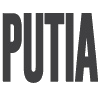To all Sicilians, Mount Etna is “a Muntagna” - THE Mountain - a definition that embodies a sort of respect mixed with some degree of affection. It's that feeling you might have towards a member of your family, someone important and well known throughout the world, that could however wipe you out in a split second without so much as a blink.
Magnificent and dangerous, Mount Etna represents a naturalistic heritage and an economic resource for all the territory, for the towns that developed around it and for the local people who chose, despite the risks, to live side by side with such an extraordinary force of nature.
The lava stone that is extracted from Mongibello (another of Mount Etna's names) is the most emblematic expression of how one can take the destructive power of nature, a strength that changes and shapes the land, and turn it into something precious and beautiful. The black heart of Sicily, one might call it, and far from being cold and dead, it beats with energy and vitality.

Lava stone was used for centuries in all the towns and cities of the Etna area to build streets, parts of buildings and in general urban decorations. You can get a sense of it just by walking in the city center of Catania. After all this time however, lava stone production still finds new creative impulses, to the point where it recently expanded even to the field of interior design. The technique wasn’t born in Sicily, but in Rome during the XIX century. Barbaro Messina did perfect it though, and gave it the prestige it still holds today. The creative possibilities born from this technique are endless and, through the capable hands of our artisans, they perfectly combine with the patterns and colours of Sicilian ceramic tradition. The production has become so refined in time that even goldsmiths started using lava stone, turning it into extraordinary jewels, and creating unique and elegant pieces, made with extreme care and attention to details. Both these new expressions of “modern” lava stone work - interior design and jewelry - find their own place here in PUTIA, among the creations of our talented artists. There’s no better way to celebrate Sicily and one of its most typical elements than to let it speak for itself and, through its tale made of beauty and tradition, tell the story of its (and our) land. We have therefore the marvelous jewels crafted by Roberto Intorre, that tell us the secret behind the power of lava stone and its disruptive energy. Thanks to the artist’s talent - to his vision - what might appear as simply a black rock comes to life, and becomes a stunning piece of jewelry, made of refined, almost delicate lines, and yet full of character and strength. An apparent contradiction that finds its perfect synthesis, mirroring the very same nature it comes from with its harmony . The artisan often uses lava stone with silver or coral, two materials whose brightness creates a beautiful contrast with the opacity of the stone. The energy of lava stone comes instead in a more “neat” approach with the Folk collection. But it’s just on the surface. A style that we find in the kitchen set as well as in the jewels: necklaces, earrings and rings where the lava stone’s strong personality is combined with a lighter tone and a vintage touch. On Putia.eu you can find our selection of products made of lava stone in the collection page I Lava you. Have a look and take the chance to be charmed by the strength of the black heart of Sicily! Cover photo: B&B Quattro Torri
In this context, a fundamental role was held by the development of “ceramized” lava stone (though the correct term would be majolica lava stone). This working technique, that allows to glaze lava stone, arrived in Sicily back in the 70s thanks to Barbaro Messina, an artisan from Paternò. His work was so important, that in 2005 he was even enlisted in the Register of the Intangible Sicilian Heritage as a “Living Human Treasure”.
The objects here have a geometrical modern cut, and their “solid” effect is marked even more by the use of colours. The lava stone is in fact glazed but the approach is quite original and uses monochromatic solutions combined with rich tones.

In this case as well as with Roberto Intorre’s jewels, the natural opacity of the stone contrasts with the brightness of the colours. However, the effect conveyed here is almost that of a “contained” power, a strength confined within those sharp lines and intense colours.

